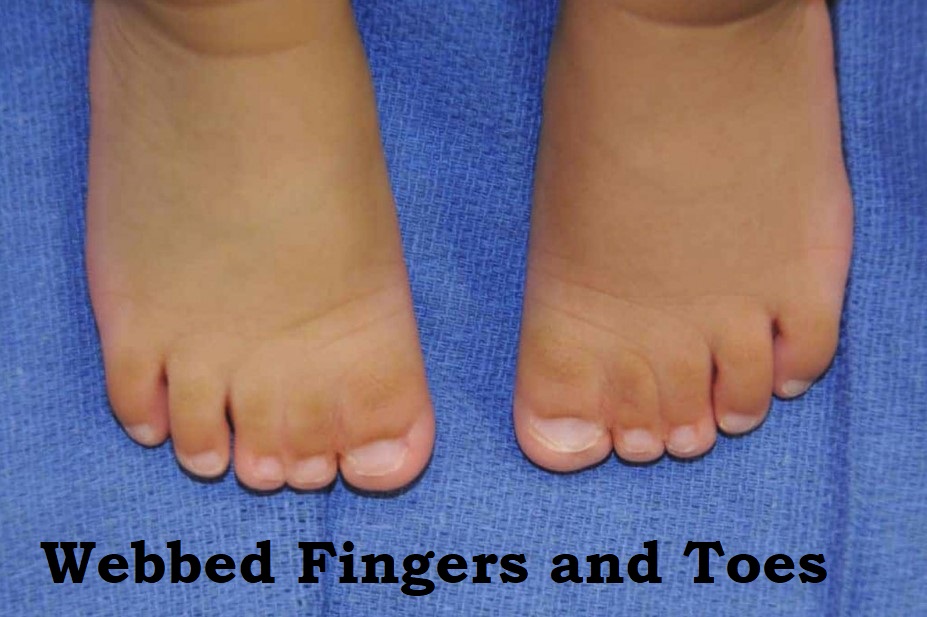After a child conceives, one of the first things educated parents to do is count the baby’s fingers and toes.
What happens when those fingers look intertwined or stuck?
Restoratively, that condition is known as ‘webbed fingers or toes’ also called ‘syndactyly’. It happens when skin wires at least two fingers or toes, making them look “webbed.” Bones and other delicate tissues are also affected. Webbed fingers and toes are analyzed upon entering the world, or in some cases significantly before pre-birth ultrasound screenings.
Webbed fingers and toes can unexpectedly affect everyone. This is the very thing you want to know about the kinds of webbing that happen to fingers and toes.

What Are the Different Types of Webbed Fingers and Toes?
Every individual with webbed fingers or toes grows differently and has special hereditary cosmetics that can impact the severity and type of syndactyly that influences them. While syndactyly alludes to skin webbing, there are varieties of the condition that include skin, bone, and interfacing issues.
There are four categories of webbing-based foot side effects:
Table of Contents
Basic Webbing
Fingers or toes consolidate with skin and other delicate tissues.
Complex Webbing
A few bones still meld under the skin.
Muddled Webbing
A person with extra, missing, or incomplete bones with strange ligaments and tendons.
Inadequate Webbing
A piece of skin between fingers and toes is webbed.
Webbing is further divided into several types depending upon which fingers or toes affect:
Type 1. This is the most widely recognized type of webbing among fingers and toes that do not connect with other hereditary conditions. Frequently the third and fourth fingers or second and third toes impact a lot. This kind of webbing typically affects both the right and left hands or both feet.
Type 2. This type of webbing regularly affects the third and fourth fingers and the fifth toe. Individuals with this type of webbing usually have additional fingers or toes. It can likewise make the fifth finger bent, slanted, or abbreviated.
Type 3. This variety mainly affects the fourth and fifth fingers of the hands. The third — or middle – finger also merges, missing, or lacking. Type 3 syndactyly doesn’t affect the feet.
There are numerous different kinds of syndactyly that affect the skin and bones of fingers and toes. Your primary care physician will want to analyze the severity and type of the condition by utilizing actual tests, X-beams, or hereditary testing
Symptoms of Webbed Fingers and Toes
Fingers that are melded or joined may look webbed, and they may not move well.
For certain kids, having webbed fingers and/or toes is just a single side effect of a more complicated hereditary condition or disorder. These kids will have different signs and side effects.
What Causes Webbed Fingers and Toes?
A youngster’s hand may look like an oar while creating in the belly.
The hand starts to part and frame fingers around the sixth or seventh seven-day stretch of pregnancy. This interaction isn’t carried out effectively in that state of webbed fingers, resulting in digits that are intertwined.
Webbing of the fingers and toes for the most part happens aimlessly and with no clear explanation. In most cases, it’s the result of an acquired attribute.
Webbing also connects with hereditary disorders, such as Down syndrome and Apert’s syndrome conditions. These are hereditary issues that can cause strange development of the bones in the hands.
Treatment for Webbed Fingers and Toes
In all cases, except for the mildest types of webbed fingers and a few webbed toes, the condition handles carefully.
Medical procedures can vary from genuinely easy to extremely complicated depending upon the level of combination between the digits.
Surgery
The medical procedure undergoes broad sedation, and that means that there is a blend of meds to make it light-out time for the person in problem. Your child should not feel traumatized or have any memory of the medical procedure. Youngsters typically have the surgery between the ages of 1 and 2 since it is the point at which the dangers of sedation are lower.
During a medical procedure, the webbing between the fingers or toes part equally − looking like a Z. At times, additional skin expects to cover the recently isolated fingers or toes.
On the off chance that this occurs, the skin removes from the upper arm or another region to cover these regions; this method is known as a skin join. In most cases, only two digits work at a time. Depending on your child’s specific case, a few tasks might be required for one group of digits.
After Surgery
After the medical procedure, your child’s hand or foot will be in a cast. The cast stays on for around three weeks before it takes off and replaces with a new one. An elastic spacer requires for keeping your child’s fingers or toes isolated while the person in question rests.
There is a chance that your child may also receive non-invasive treatment after the medical procedure to assist with firmness, development, and enlarging.
Your child should have regular physical examinations to monitor the development of their fingers and toes. During these exams, your child’s PCP will ensure that the entry points have fully recovered. The specialist will also determine whether your child requires additional systems.
After Medical Procedure Recuperation
Your child’s hand will be put in a cast after a medical procedure. The cast stays on for around 3 weeks before it removes and replaces with support.
An elastic spacer may also use to keep the fingers isolated while they rest.
Almost certainly, they’ll proceed through non-invasive treatment after medical treatment to help with things like:
- solidness
- scope of movement
- expanding
Your child should schedule regular meetings with their medical provider to monitor the recovery progress of their fingers and toes. During these exams, their medical services provider will ensure that the entry points have been amended appropriately.
They’ll also check for web creep, which is the point at which the webbed scab develops after a medical procedure. From the assessment, the medical care provider will determine whether your child needs additional attention.
FAQs
Syndactyly occurs when toes do not have gaps and separate appropriately during the child’s development in the belly. They probably won’t become autonomous digits because of a hereditary condition (for instance, webbed toes can be related to Down disorder), yet this is intriguing.
Webbing of the digits, or syndactyly, isn’t brought about by the fingers staying together in the belly; rather, it is brought about by disappointment, during the 6th to eighth long stretches of intrauterine life, of the standard longitudinal interdigital corruption that typically isolates the fingers.
As webbed toes can disrupt the natural flow of events, lead to handicap, and conceivably cause confidence issues, most health insurance plans cover part of the expense of the remedial medical procedure.
Patients with webbed toes regularly report no aggravation or absence of portability from the condition. If you have webbed toes and they are uncomfortable or making it difficult for you to walk, then you should visit a podiatrist.
